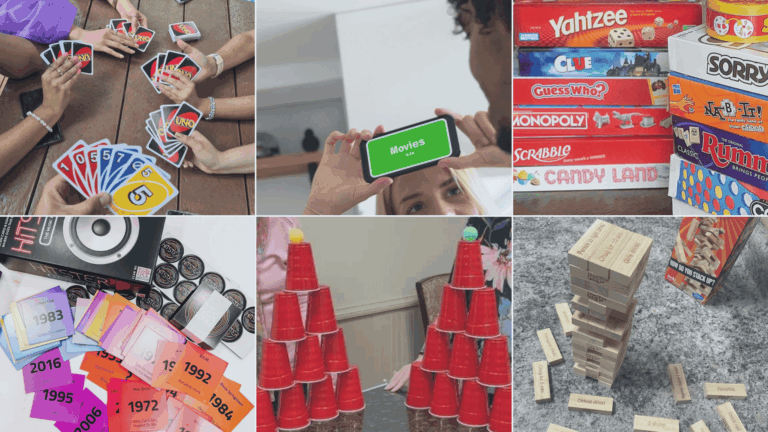Most people think they’re good listeners until someone asks them to repeat what was just said. That awkward silence? It happens more than anyone cares to admit.
Poor listening skills can cost companies millions in missed deadlines, confusion, and frustrated employees. Teams struggle with miscommunication while managers wonder why their messages don’t stick.
The solution lies in practical, proven active listening activities that convert how people connect and communicate with each other.
These simple exercises help teams build stronger relationships, reduce workplace conflicts, and boost productivity.
The Science Behind Active Listening
Active listening works by engaging multiple areas of your brain simultaneously, creating stronger neural connections and better memory formation.
This full engagement activates the prefrontal cortex, which is responsible for controlling attention and decision-making.
Research shows that active listening increases empathy by triggering mirror neurons, which helps you understand others’ feelings.
It also reduces stress hormones, such as cortisol, while boosting feel-good chemicals, like oxytocin.
Studies have proven that active listeners have better relationships, improved problem-solving skills, and enhanced emotional intelligence, making them a powerful communication tool for personal and professional success.
Why Workplaces Are Failing at Listening

American workplaces face a severe listening crisis that’s damaging employee engagement and productivity.
According to Gallup research, only 32% of U.S. employees feel engaged at work, mainly due to poor communication and a sense of being unheard by their managers.
Key Problems:
- Digital Overload: Employees check Slack every 6 minutes and receive 120+ emails daily
- Zoom Fatigue: Virtual meetings reduce nonverbal communication cues by 70%
- Multitasking: Productivity drops 40% when juggling tasks during conversations
- Generational Gaps: 5 generations in today’s workforce have different communication styles
- Time Pressure: 67% of managers rush through conversations to meet deadlines
- Lack of Training: Only 25% of companies teach listening skills
- Open Office Noise: Background distractions reduce listening comprehension by 50%
Top Active Listening Activities That Work

Strengthen team communication, trust, and engagement with these field-tested active listening activities. Perfect for boosting collaboration in meetings, remote teams, and leadership training sessions.
1. Echo Chamber
This activity helps participants sharpen their focus by requiring them to repeat what they hear before responding. It promotes retention and reduces mind-wandering in conversations.
How to Do It:
- In a conversation or meeting, each person must repeat the last sentence of the speaker before offering their input.
- This continues in rounds, keeping everyone alert and present.
2. The 5-Second Pause Rule
This simple habit trains teams to slow down and truly process what was said. It prevents reactive replies and encourages more profound understanding.
How to Do It:
- After someone finishes speaking, everyone waits five seconds before responding.
- Use a timer or visual cue if needed in early practice rounds.
3. Intent Detector
Participants guess the speaker’s emotional intent based on tone and word choice. It sharpens emotional intelligence and reduces misinterpretation.
How to Do It:
- One person shares a statement (real or role-played), and others guess their emotional intent (e.g., frustration, excitement, concern).
- Debrief by revealing the actual intent and discussing different interpretations.
4. The Story Relay
A collaborative storytelling game where participants must listen closely to continue the narrative. Ideal for boosting memory and active focus.
How to Do It:
- One person starts a story with a single sentence; the next repeats it and adds another.
- Continue until all participants have contributed, then recap the entire story.
5. Two Truths and a Lie
A listening-first spin on the icebreaker. Instead of guessing the lie, listeners must only ask clarifying questions.
How to Do It:
- Each participant shares two facts and one made-up fact.
- Others can only ask follow-up questions to better understand before making a guess.
6. Red Flag Words
A fun game where certain words are banned from use, requiring careful listening and adaptation during conversations.
How to Do It:
- Assign each player a “red flag” word they must avoid and listen for in others.
- If someone uses a flagged word, they must pause and summarize what was said last.
7. The Silent Observer
One person listens without speaking and later reflects on tone, body language, and content. Trains are listening without reacting.
How to Do It:
- During a discussion, assign one person as a silent observer.
- After the conversation, they share observations about delivery, not content.
8. Empathy Switch
Teammates switch perspectives and role-play each other’s viewpoints. Great for conflict resolution and building compassion.
How to Do It:
- In pairs, have each person explain their view on a topic or decision.
- Then switch roles and argue from the other’s perspective.
9. The One-Word Check-In
Builds emotional awareness by starting meetings with a one-word mood check. Promotes empathy and focus.
How to Do It:
- Each participant says one word to describe how they feel.
- Others paraphrase or validate that emotion aloud before moving on.
10. Noise-Cancel Meeting
A meeting format where no one interrupts, and only follow-up questions are allowed. Reduces dominance and boosts focus.
How to Do It:
- Each person gets uninterrupted speaking time.
- Others may only ask clarifying questions afterward, with no counterpoints.
11. The Paraphrase Partner Drill
Pairs work together to paraphrase what the other says in their own words, testing their understanding, not just hearing.
How to Do It:
- One person shares an opinion or experience.
- The partner restates it in different words and checks for accuracy.
12. Listening Charades
A twist on charades: players act out what someone else described, based solely on verbal cues. Enhances auditory focus.
How to Do It:
- One person describes an action, object, or idea.
- Another acts it out without having seen it written or drawn.
13. Reverse Interview
Flip the traditional Q&A. The “interviewee” listens while others describe their understanding of their role or challenges.
How to Do It:
- Ask team members to describe a colleague’s role or goals aloud.
- The subject only listens and later reflects on what they heard.
14. Feel, Think, Want Framework
Each speaker shares their feelings, thoughts, and desires on an issue; listeners must identify all three correctly.
How to Do It:
- One person speaks using the framework (I feel, I think, I want).
- Others repeat back what they heard under each category.
15. Listening for Values
While someone shares, the listener identifies underlying values driving their message (e.g., fairness, security, growth).
How to Do It:
- In small groups, one shares a story or a challenge.
- Listeners reflect on and identify at least one core value they have heard.
16. Question Ping-Pong
Participants can only reply with a question. It challenges reflexes and promotes critical thinking and attentive questioning.
How to Do It:
- In pairs, carry on a conversation where every reply must be a question.
- If someone makes a statement, restart the round.
17. Clarify or Confirm?
Listeners choose to either ask a clarifying question or confirm understanding, reinforcing different types of listening.
How to Do It:
- After each statement, the next person either summarizes it or asks for clarification.
- Rotate roles to keep the practice dynamic.
18. Tone Tracker
Focuses on vocal cues. Listeners guess the speaker’s mood based on tone alone, with minimal content clues.
How to Do It:
- A speaker reads neutral sentences in various emotional tones.
- Others guess the emotion being conveyed.
19. The “Uh-Huh” Challenge
Listeners must avoid all filler words and auto-responses, such as “uh-huh” or “yeah.” Forces full-body, intentional listening.
How to Do It:
- During a partner conversation, eliminate all automatic verbal feedback.
- Use eye contact and gestures only.
20. Listening Journals
A reflective practice. Participants write down insights they picked up from meetings, not their points.
How to Do It:
- After a meeting or conversation, write down three things others said.
- Share reflections in pairs or small groups.
21. Playback Drill
Record a team meeting or conversation. Participants later replay and assess their listening performance.
How to Do It:
- Use recording tools (Zoom, Otter.ai).
- Watch/listen back and score attentiveness or misinterpretations.
22. Metaphor Mapping
Participants listen to a story or concept and explain it using an original metaphor. Boosts creative comprehension.
How to Do It:
- One person shares an idea or challenge.
- Others reply using a metaphor to capture the message.
23. “I Hear You” Circle
In group discussions, each comment must begin with “I heard you say…” before adding a new point. Reinforces validation.
How to Do It:
- One at a time, participants reflect and then share their contributions.
- No new points will be added until the previous one is acknowledged.
24. Emotion Echo
Listeners identify and name the emotion expressed, not just the content. Builds emotional literacy.
How to Do It:
- After someone speaks, others reflect their perceived emotion.
- Confirm or adjust with input from the original speaker.
25. Listening BINGO
Turn good listening behaviors into a Bingo game. Makes practice fun and measurable.
How to Do It:
- Create Bingo cards with listening behaviors (e.g., paraphrasing, clarifying questions).
- Mark off boxes during meetings or workshops.
26. “What I Didn’t Say” Reflection
After speaking, a person reflects on what they held back. Others listen for what was unsaid.
How to Do It:
- The speaker shares briefly on a topic.
- Then adds “what I didn’t say, but felt,” while others listen quietly.
27. Zoom Whisper Chain
For virtual teams, replicate the “telephone” game to demonstrate how quickly intent can get lost. Highlights digital listening flaws.
How to Do It:
- Whisper a message in Zoom’s private chat from one person to the next.
- Read the final message aloud and compare it to the original.
How to Integrate Listening into Company Culture
Embedding active listening activities as a core workplace habit by making it visible, practiced, and valued across all levels of the organization.
- Model it from the top: Leaders should consistently demonstrate active listening in meetings and feedback sessions.
- Make it a meeting norm: Embed listening rituals, such as paraphrasing or pausing for silence, into team gatherings.
- Recognize good listeners: Celebrate and reward employees who demonstrate empathetic and attentive listening skills.
- Train for it regularly: Offer ongoing workshops or micro-sessions focused on listening skills.
- Build it into reviews: Include listening behavior as a metric in performance evaluations and 360 feedback.
Bottom Line
Active listening activities aren’t just a skill; they’re a workplace superpower that transforms teams, boosts productivity, and creates stronger connections.
Start with just one activity this week and watch engagement soar. Remember, great listeners aren’t born; they’re made through consistent practice.
When you truly listen, you don’t just hear words; you build trust, solve problems more efficiently, and foster an inclusive environment where everyone thrives. Your workplace transformation begins with your following conversation.
Ready to become a listener? Try one exercise today and share your results with us in the comments below!


















